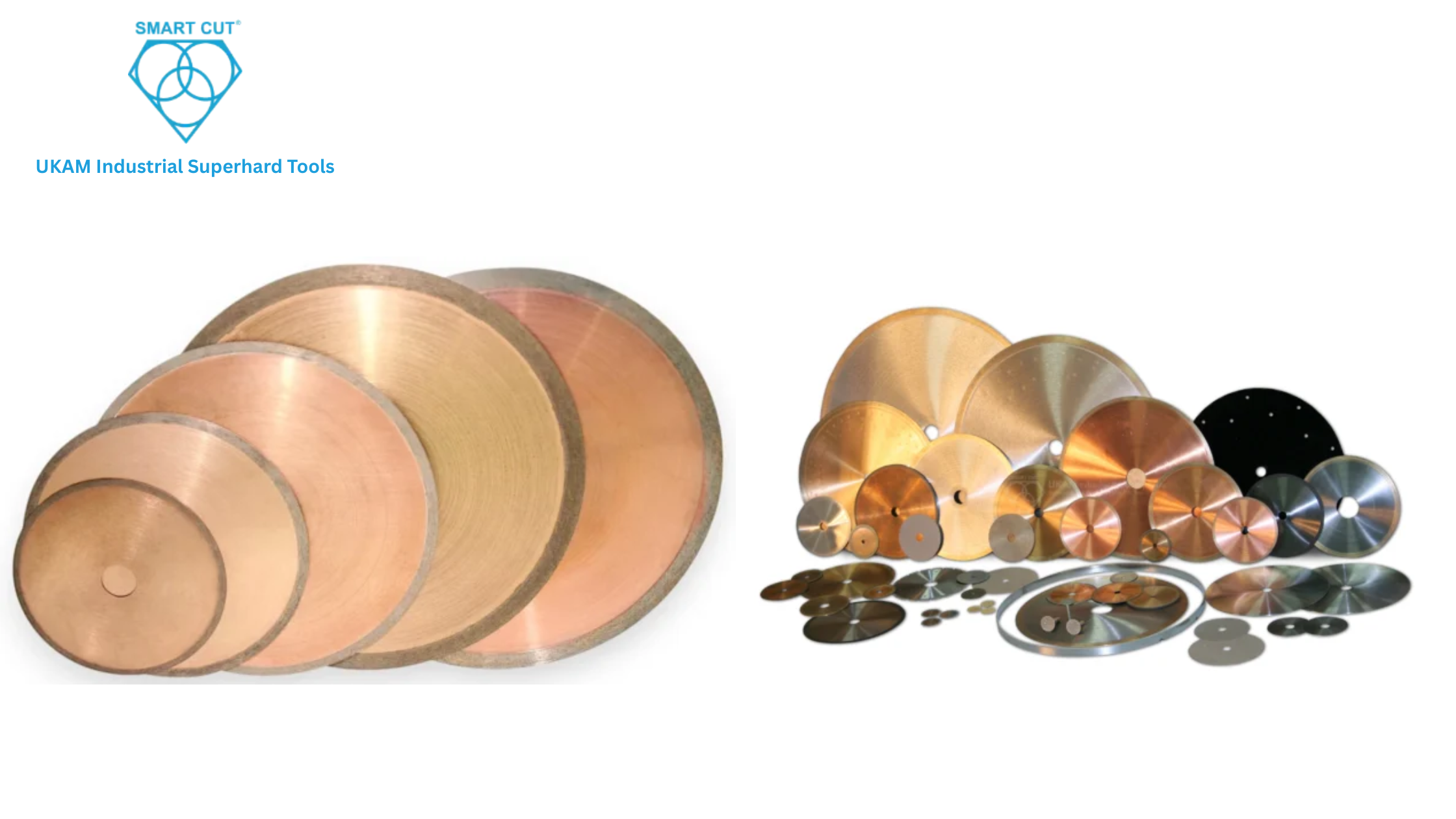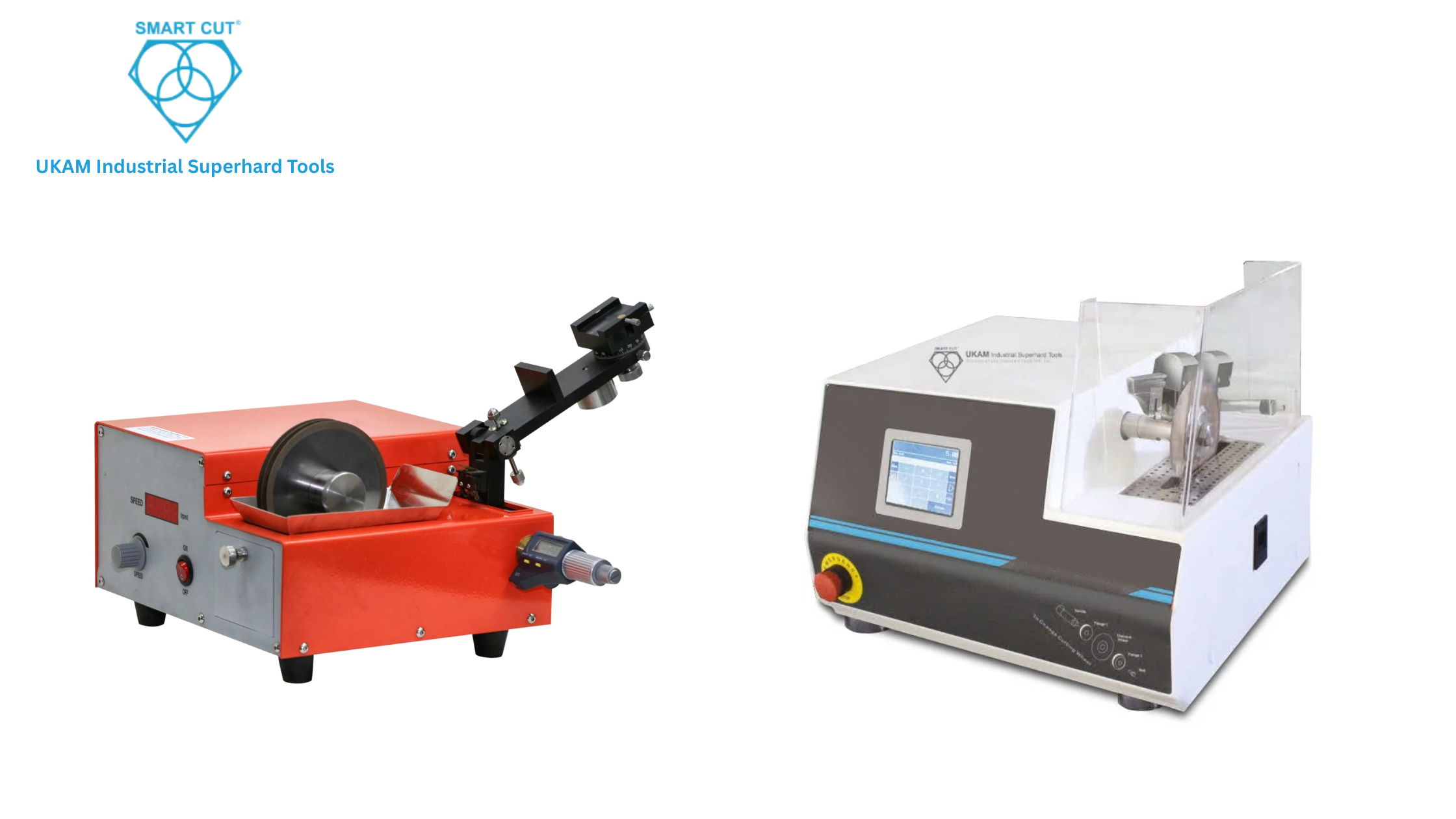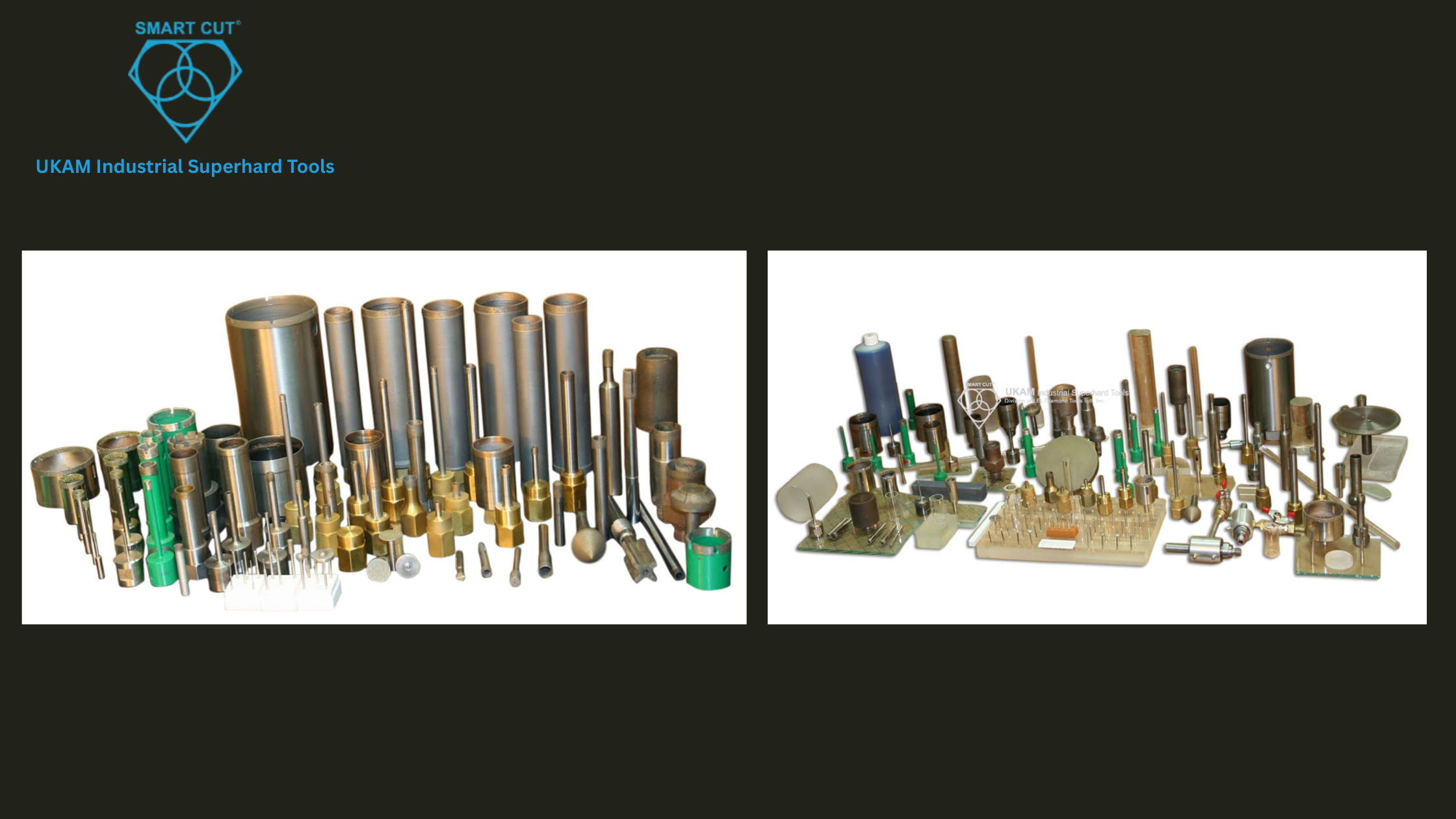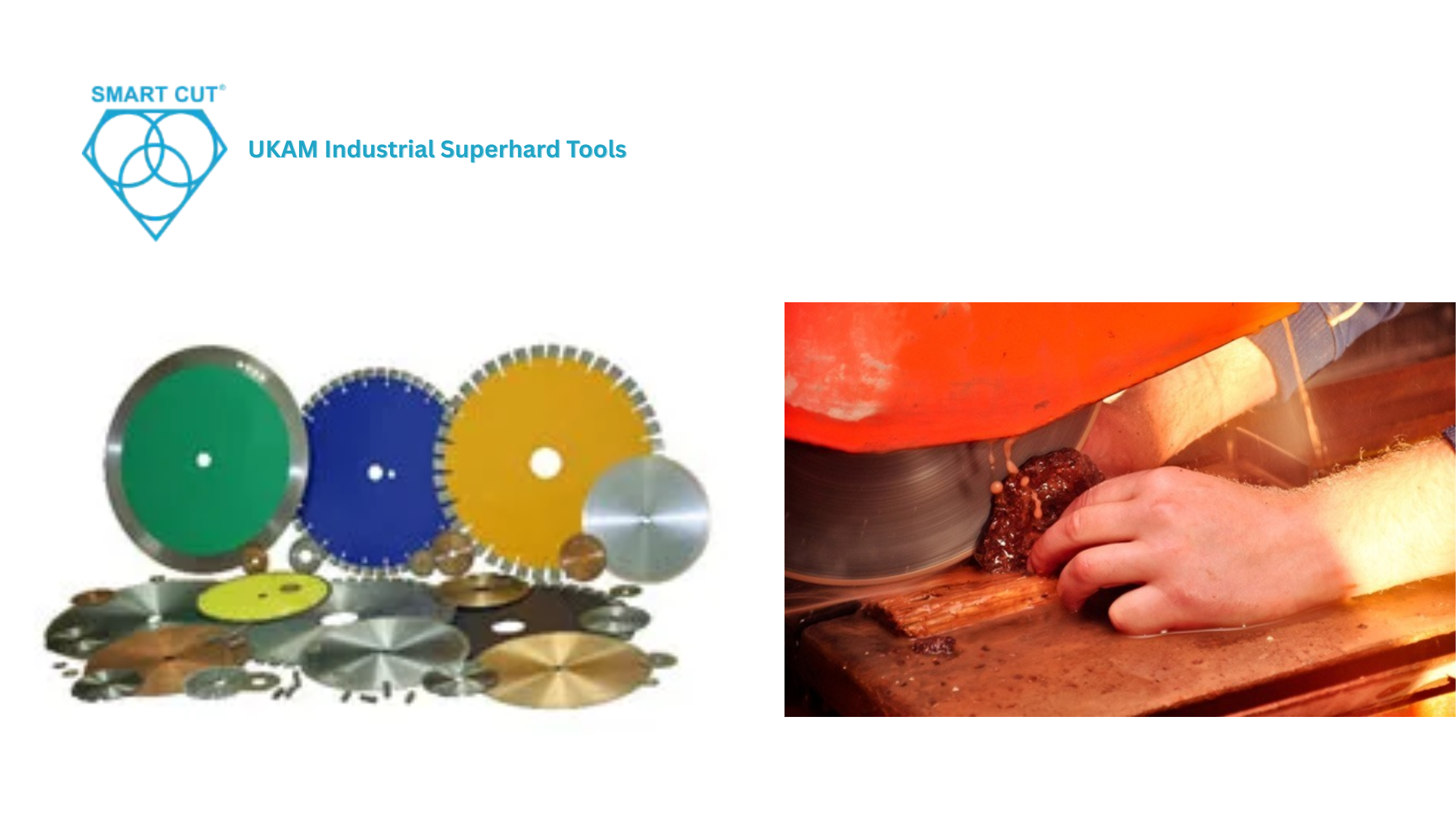 Tiered Link Strategy – Multiply Your SEO Impact Today!
Tiered Link Strategy – Multiply Your SEO Impact Today!
Diamond Blades for Rough Stone Trimming: Knowledge for Professionals
Written by Ukam » Updated on: July 06th, 2025

There's something almost magical about transforming rough, jagged stone into smooth, precisely shaped pieces. Behind this transformation lies an unsung hero of the stone industry: diamond blades for rough stone trimming. These specialized cutting tools have revolutionized stoneworking, making possible what craftsmen of previous generations could only dream of achieving.
Stone professionals across various fields - from countertop fabricators to sculptors, masons to restoration specialists - rely on these remarkable tools daily. Yet many still haven't fully grasped how to select and use them for maximum effectiveness. This guide aims to change that.
The Unique Challenges of Working with Rough Stone
The rough stone isn't like other materials. Anyone who's worked with it knows this truth intimately. One minute you're cutting through relatively soft material, and the next, you hit a vein of quartz that feels like steel. These unpredictable variations make rough stone trimming particularly challenging.
What makes these challenges even trickier:
- Stone often hides internal fractures that can suddenly split during cutting
- Different mineral components within the same stone have vastly different hardness
- Irregular shapes create uneven cutting pressures that can bind or jam ordinary blades
- Heat buildup can damage both the stone and the cutting tool
- Dust generation becomes a serious health and equipment concern
Standard cutting tools simply weren't designed to handle these conditions. That's where diamond blades for rough stone trimming come into play.
Why Diamond Makes All the Difference
Talk to any experienced stone worker about their first time using a quality diamond blade, and you'll likely hear something akin to a conversion story. The difference is that dramatic.
Diamond blades work fundamentally differently than conventional cutting tools. Rather than relying on a sharp edge that quickly dulls against hard materials, diamond blades use thousands of microscopic diamond particles embedded in a metal matrix. As the blade spins, these particles grind away the stone material bit by microscopic bit.
This approach solves several problems at once:
- The diamonds are harder than virtually any stone material they encounter
- As one layer of diamonds wears down, new ones become exposed
- The grinding process generates less violent force than conventional cutting
- The design allows for effective cooling during operation
Some newcomers to stone trimming balk at the price tag of quality diamond blades. However, the math usually works out in their favor, as one good diamond blade often outlasts dozens of conventional blades while producing superior results.
Diamond Blade Types You Should Know About
Not all diamond blades for rough stone trimming are created equal. The differences go far beyond simple quality variations - different blade designs serve distinctly different purposes.
Continuous Rim Blades
These blades feature diamonds embedded around an uninterrupted edge. They excel at producing smooth, clean cuts with minimal chipping.
Best suited for:
- Fragile or brittle stones prone to chipping
- Projects requiring fine, smooth cuts
- Precise detail work
- Materials like marble, limestone, and some tiles
A professional tip: When using continuous rim blades, lighter pressure often yields better results than forcing the cut.
Segmented Blades
These feature distinct cutting segments separated by gullets (gaps). The design allows for better cooling and debris removal during cutting.
Ideal for:
- Faster cutting on larger projects
- Materials like concrete, brick, and harder stones
- Extended cutting sessions where heat buildup becomes a concern
- Applications where cut smoothness is less critical than speed
Many professionals keep both segmented and continuous rim blades on hand, switching between them as project needs dictate.
Turbo (Hybrid) Blades
These clever designs attempt to bridge the gap between segmented and continuous blades, offering a compromise between cutting speed and edge smoothness.
Most useful for:
- General-purpose stone-cutting
- Situations requiring decent speed and reasonable finish quality
- Contractors who can only bring limited equipment on-site
- Materials of varying or unknown hardness
While not specialized for extreme performance in either direction, turbo blades have become increasingly popular for their versatility.
Matching Blade to Material: The Key to Success
One of the most common mistakes newer stone workers make is treating all stone materials as essentially the same. Veterans know better. The blade that cuts granite beautifully might perform terribly on sandstone.
For Granite and Other Hard Stones
Hard stones demand respect and the right equipment:
- Higher diamond concentration blades stand up better to the abrasive nature
- Harder metal bond prevents premature diamond loss
- Segmented designs help manage the substantial heat generated
- Adequate water cooling becomes absolutely essential
For Marble and Medium-Hardness Stone
These materials allow for some adjustments:
- Moderate diamond concentration provides good cutting with less blade wear
- Medium-hard bond works well for sustained cutting
- Continuous rim often preferred for the smooth edge quality
- Water cooling is still important but slightly more forgiving
For Limestone, Sandstone, and Softer Materials
Softer stones present their own challenges:
- Lower diamond concentration prevents the blade from loading up
- Softer bond allows appropriate diamond exposure
- Gullets help clear the substantial debris generated
- Dust management becomes particularly important
Beyond these general categories, specialty stones like soapstone, alabaster, and engineered materials each have their own optimal blade specifications. When in doubt, consulting with an experienced supplier like UKAM Industrial Superhard Tools can save considerable time and expense.
Diamond Cutting Blade YAG: When Standard Solutions Aren't Enough
While conventional diamond blades handle most stoneworking tasks admirably, certain specialized applications demand even more advanced technology. This is where Diamond Cutting Blade YAG technology comes into play.
Diamond Cutting Blade YAG refers to specialized cutting tools developed for working with synthetic crystals like Yttrium Aluminum Garnet (YAG) and similar materials. These aren't your everyday cutting tools - they represent the cutting edge of precision cutting technology.
These specialized blades feature:
- Ultra-precise diamond placement techniques
- Modified bonding systems optimized for synthetic materials
- Enhanced cooling configurations
- Extremely fine diamond grit for exceptional surface quality
Originally developed for high-tech applications in laboratories and advanced manufacturing, Diamond Cutting Blade YAG technology has found its way into premium stoneworking applications where extraordinary precision is required.
UKAM Industrial Superhard Tools has been at the forefront of adapting this technology for broader applications, creating crossover tools that bring laboratory precision to commercial stoneworking.
## What Actually Matters When Choosing Diamond Blades
Marketing materials often overwhelm buyers with technical specifications and proprietary features. But when selecting diamond blades for rough stone trimming, a few factors truly make the difference between success and frustration:
Diamond Quality and Distribution
Not all industrial diamonds are equal. Quality blades use synthetic diamonds specifically manufactured for cutting applications, with controlled size, shape, and strength characteristics.
The distribution matters too - how those diamonds are arranged within the cutting segment significantly affects performance. Premium blades feature optimized diamond distribution patterns rather than random placement.
Bonding System
The metal matrix holding the diamonds determines how quickly they're exposed and shed during cutting. This bonding system must be carefully matched to the target material - too soft, and the blade wears quickly; too hard, and the diamonds become dull before new ones are exposed.
Advanced manufacturers like UKAM Industrial Superhard Tools develop proprietary bonding formulations tailored to specific cutting applications.
Core Construction
The steel core supporting the diamond segments is far more than just a mounting system. Its design affects:
- How straight the blade cuts
- Vibration levels during operation
- Heat dissipation characteristics
- Noise levels during cutting
Quality blades feature precision-tensioned steel cores with carefully designed expansion slots to prevent warping during the intense heat of cutting operations.
Cooling Design
Water cooling dramatically extends blade life while improving cut quality. Modern diamond blades incorporate sophisticated cooling channels designed to deliver water precisely where needed during cutting.
Real-World Blade Performance Tips
Technical specifications matter, but practical experience reveals what truly works in the field. Here are some insights from professionals who work with stone daily:
Starting New Cuts
The beginning of a cut is where many blades fail. Reduce this risk by:
- Starting with reduced pressure until a channel is established
- Ensuring the blade isn't wobbling before contacting the stone
- Making sure the stone is properly secured before beginning
- Using a guide for the first few inches of critical cuts
Managing Heat
Heat is the enemy of both diamond blades and stone materials:
- Ensure water cooling systems are functioning properly before starting
- Take periodic breaks during extended cuts to allow cooling
- Watch for steam - it indicates inadequate cooling
- Listen for changes in the sound of cutting - higher pitches often signal overheating
Extending Blade Life
Quality diamond blades represent a significant investment. Protect this investment by:
- Storing blades flat to prevent warping
- Cleaning blades thoroughly after use to prevent material buildup
- Periodically dressing glazed blades to expose fresh diamonds
- Using appropriate blade speed (RPM) for the specific blade design
Achieving Better Finish Quality
When surface finish matters:
- Make final passes with lighter pressure
- Consider a finishing pass with a finer grit blade
- Maintain a consistent feed rate throughout the cut
- Ensure the blade isn't wobbling or vibrating excessively
Specialized Applications Beyond Basic Trimming
While general rough trimming constitutes the most common application, diamond blades excel in several specialized stoneworking scenarios:
Decorative Edgework
Modern diamond blade technology includes specialized profile blades for creating:
- Bullnose edges on countertops
- Beveled edges on architectural elements
- Ogee and other decorative profiles
- V-grooves for drainage or design features
Sculpture and Artistic Work
Stone artists and sculptors use diamond blades to:
- Remove bulk material during initial shaping
- Create precise planes and angles
- Cut channels and undercuts in relief work
- Establish guide cuts for hand-finishing
Historical Restoration
Preservation specialists value diamond blades for:
- Precisely removing damaged sections of historic stonework
- Creating clean joints for Dutchman repairs
- Matching existing profiles on period stonework
- Minimal impact cutting near fragile areas
Environmental and Safety Considerations Worth Noting
Modern stoneworking must balance craftsmanship with worker safety and environmental responsibility:
Silica Dust Management
Stone dust contains silica that poses serious health risks:
- Wet cutting dramatically reduces airborne dust
- Proper ventilation and dust collection are essential for dry-cutting
- Appropriate respiratory protection should always be used
- Regular equipment cleaning prevents dust accumulation
Water Management
Wet cutting produces slurry that requires proper handling:
- Collect and dispose of slurry according to local regulations
- Consider water recycling systems for larger operations
- Prevent slurry from entering storm drains or waterways
- Filter water before disposal to remove suspended particles
Noise Reduction
Diamond cutting produces significant noise that can damage hearing:
- Always use appropriate hearing protection
- Consider noise-optimized blade designs where appropriate
- Position cutting operations to minimize noise impact on others
- Schedule noisy cutting during appropriate hours
The Economics of Quality: Why Premium Blades Often Cost Less
The sticker price of premium diamond blades for rough stone trimming can cause sticker shock. However, experienced professionals calculate cost differently - they look at the total cost per cut, not just the initial purchase price.
Quality blades typically deliver better economics through:
- Longer operational life, spreading the cost over more projects
- Faster cutting speeds, reducing labor costs
- Cleaner cuts requiring less secondary finishing
- Reduced wear on expensive cutting equipment
- Fewer failed cuts and material waste
Many seasoned professionals have learned through experience that "saving" money on budget blades often costs more in the long run.
Emerging Trends in Diamond Blade Technology
The field continues to evolve with several notable innovations:
Advanced Diamond Engineering
Laboratory-created diamonds with optimized properties are increasingly replacing traditional industrial diamonds in premium blades.
Composite Core Materials
New core designs incorporating composite materials are reducing weight while improving stability and vibration characteristics.
Specialized Bonding Systems
Multi-layer and variable-hardness bonding systems create blades that adapt to changing cutting conditions.
Connected Tool Technology
Emerging IoT features are allowing for real-time monitoring of blade performance and wear patterns.
Finding Your Perfect Diamond Blade Partner
While understanding diamond blades for rough stone trimming is important, partnering with the right supplier often makes a critical difference.
UKAM Industrial Superhard Tools has built its reputation by bringing advanced materials science to practical stoneworking applications. Their comprehensive product range includes everything from standard rough trimming blades to specialized Diamond Cutting Blade YAG technology for the most demanding applications.
The right diamond blade doesn't just cut stone - it enhances craftsmanship, improves workflow efficiency, and ultimately contributes to finished work you can be proud of. Whether you're a seasoned professional or just beginning your journey in stonework, investing in quality diamond blades is one of the smartest decisions you can make.
With the right knowledge and tools, the ancient art of shaping stone continues its evolution, maintaining its place as one of humanity's most enduring crafts.
Note: IndiBlogHub features both user-submitted and editorial content. We do not verify third-party contributions. Read our Disclaimer and Privacy Policyfor details.
Copyright © 2019-2025 IndiBlogHub.com. All rights reserved. Hosted on DigitalOcean for fast, reliable performance.














